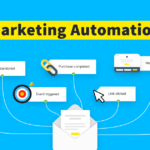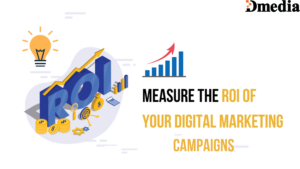
In the rapidly evolving world of e-commerce, Amazon has emerged as the undisputed giant. With millions of sellers vying for the attention of countless shoppers, leveraging the power of Amazon Ads has become essential for businesses looking to make their mark. In this comprehensive guide, we’ll delve into the world of Amazon Ads, exploring their types, benefits, strategies, and tips for creating effective campaigns that drive results.
Understanding Amazon Ads
What are Amazon Ads?
Amazon Ads are a suite of advertising solutions offered by the e-commerce giant to help sellers and brands promote their products to a vast and engaged audience. These ads are displayed across Amazon’s platform, including search results, product pages, and even external websites.
Types of Amazon Ads
- Sponsored Products: These ads appear in search results and on product detail pages, promoting individual products. They are triggered by relevant keywords and are a great way to increase visibility for specific items.
- Sponsored Brands: Formerly known as Headline Search Ads, these ads feature your brand logo, a custom headline, and multiple products. They help drive brand awareness and showcase a range of products.
- Sponsored Display Ads: These ads target potential customers based on their shopping behavior, both on and off Amazon. They can be displayed on product detail pages, customer reviews, and even external websites.
- Video Ads on Amazon: Video has become a powerful marketing tool. These ads autoplay in relevant search results and can offer a more engaging way to showcase your products.
Why Use Amazon Ads?
Amazon Ads provide a direct avenue to reach millions of shoppers actively looking for products. With a well-structured campaign, you can:
- Increase Visibility: Amazon Ads ensure your products appear at the top of search results, giving you an edge over competitors.
- Drive Conversions: Targeted ads help connect with the right audience, increasing the likelihood of conversions and sales.
- Boost Brand Awareness: Sponsored Brands and Video Ads help you showcase your brand and tell your story to a broader audience.
- Access Valuable Insights: Amazon provides robust analytics to track your campaign’s performance and make informed decisions.
Setting Up Your Amazon Ad Campaign
Creating a Compelling Product Listing
Before diving into Amazon Ads, ensure your product listing is optimized. Use high-quality images, compelling product descriptions, and relevant keywords to enhance its appeal.
Selecting the Right Keywords
Thorough keyword research is crucial. Utilize Amazon’s keyword tools and external resources to identify high-converting keywords relevant to your products.
Budget and Bidding Strategies
Set a realistic budget based on your goals and sales projections. Experiment with bidding strategies—automatic and manual—to find the best approach for your campaign.
Types of Amazon Ads
Sponsored Products
To create a Sponsored Products campaign:
- Choose your products.
- Set a daily budget.
- Select keywords or use automatic targeting.
- Opt for manual bidding to have more control over your campaign.
Sponsored Brands
For Sponsored Brands:
- Choose products to feature.
- Create a custom headline.
- Add your logo.
- Set a budget and bids.
Sponsored Display Ads
Sponsored Display Ads offer two targeting options:
- Audience Targeting: Reach shoppers based on their interests, behaviors, and demographics.
- Product Targeting: Display your ads on similar or complementary product detail pages.
Video Ads on Amazon
Video Ads can be created through Amazon’s self-service platform. Use engaging videos to showcase your products’ features and benefits.
Optimizing Your Amazon Ad Campaigns
Monitoring and Adjusting Keyword Performance
Regularly review your campaign’s keyword performance. Remove underperforming keywords and invest more in those driving sales.
A/B Testing for Ad Copy and Creatives
Test different ad copies, images, and videos to identify what resonates best with your audience. Continuously refine your creatives for optimal results.
Leveraging Analytics for Data-Driven Decisions
Amazon provides detailed analytics on clicks, impressions, and conversions. Use this data to make informed decisions and adjust your strategy accordingly.
Advanced Strategies for Success
Amazon DSP (Demand-Side Platform)
Consider Amazon DSP for programmatic advertising, allowing you to reach customers both on and off Amazon.
Product Targeting and Category Targeting
Expand your reach by targeting specific product categories or individual products, reaching customers with relevant interests.
Remarketing with Amazon Attribution
Utilize Amazon Attribution to retarget customers who have interacted with your ads but haven’t completed a purchase.
Tips for a Successful Amazon Ad Campaign
Understand Your Target Audience
Define your ideal customer and tailor your ads to address their needs, preferences, and pain points.
Embrace Seasonal and Trending Keywords
Incorporate seasonal and trending keywords to capitalize on peak shopping periods and emerging trends.
Leverage High-Quality Images and Videos
Visuals play a pivotal role in driving conversions. Use professional images and videos to showcase your products effectively.
Keep an Eye on Competitor Trends
Monitor your competitors’ strategies and adapt your campaigns to stay ahead in the dynamic Amazon marketplace.
Frequently Asked Questions (FAQs)
What budget should I allocate for my first Amazon Ads campaign?
Your budget should be based on your advertising goals and the competitiveness of your niche. Start with a modest budget and increase it as you gain insights into your campaign’s performance.
How do I choose the right keywords for my campaign?
Utilize Amazon’s keyword research tools and consider using relevant, high-converting keywords that potential customers might use when searching for products like yours.
Can I advertise products from any category on Amazon?
Most categories are eligible for advertising, but some restrictions apply. Review Amazon’s advertising policies to ensure your products comply.
What’s the difference between automatic and manual bidding?
Automatic bidding lets Amazon set bids to help you reach your goals. Manual bidding gives you control over bid amounts, allowing you to optimize for specific keywords or placements.
How can I track the performance of my Amazon Ads?
Amazon provides detailed analytics within the Advertising Console. Monitor metrics like clicks, impressions, and conversions to assess performance.
Are there any best practices for creating effective video ads on Amazon?
Keep videos concise, highlight product benefits early, and use engaging visuals. Prioritize strong storytelling that resonates with your target audience.
What is Amazon Attribution, and how can it benefit my campaign?
Amazon Attribution allows you to measure the impact of your advertising campaigns across various channels, helping you understand the full customer journey and optimize your strategies.
How does Amazon DSP differ from other Amazon advertising options?
Amazon DSP offers programmatic advertising beyond Amazon’s platform, allowing you to target audiences on external websites and apps.
Should I focus on Sponsored Products, Sponsored Brands, or both?
The choice depends on your goals. Sponsored Products can drive sales for specific products, while Sponsored Brands enhance brand visibility. Consider a combination for a holistic approach.
Conclusion
Amazon Ads provide a powerful toolkit for businesses to reach a massive audience and drive sales. By understanding the different ad types, optimizing your campaigns, and staying attuned to your target audience, you can harness the potential of Amazon Ads to elevate your brand, boost sales, and thrive in the competitive world of e-commerce. Start your Amazon Ads journey today and unlock the true potential of this dynamic advertising platform.






No comment yet, add your voice below!